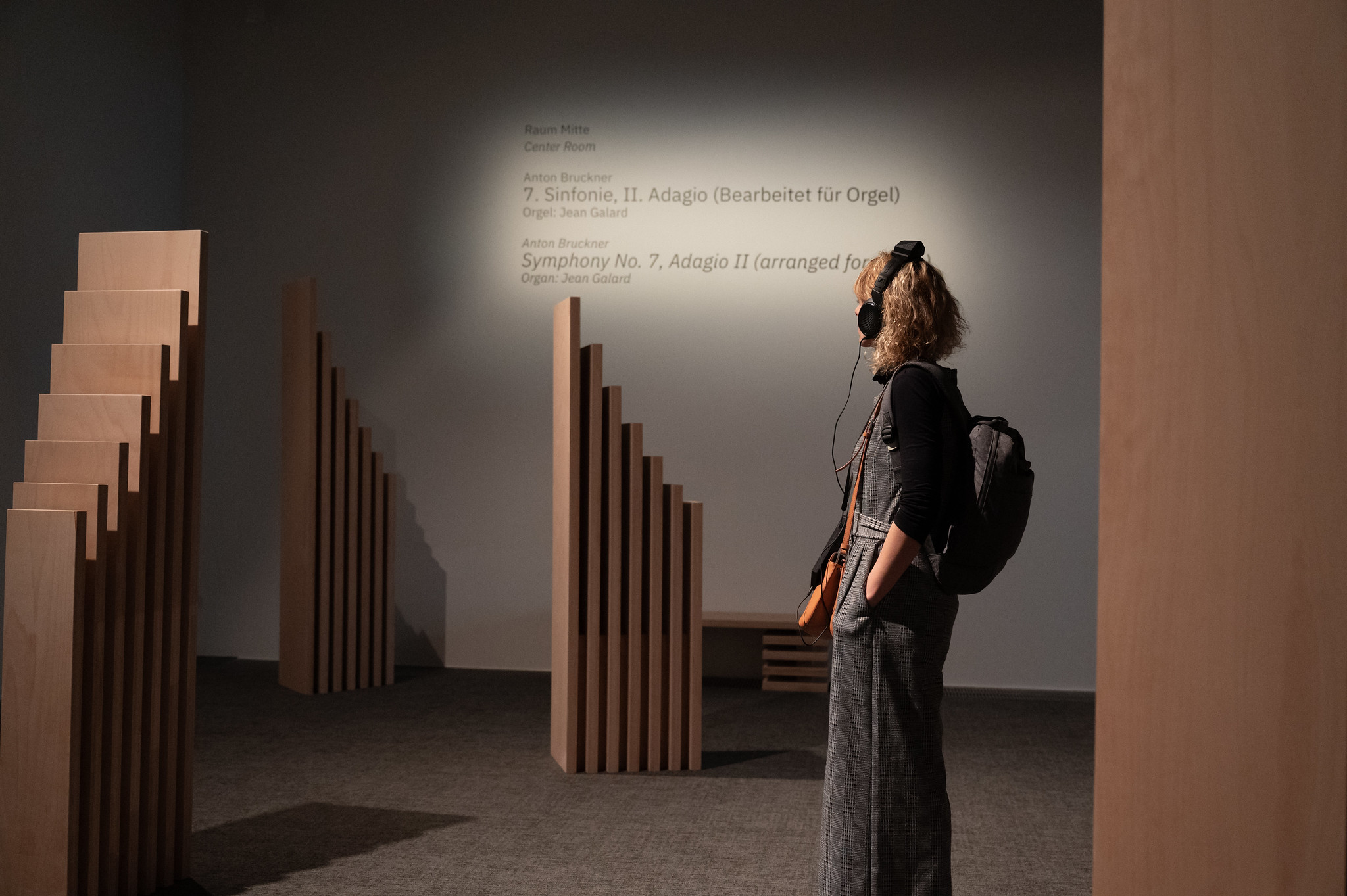Experience the world of the famous composer Anton Bruckner in a completely new way at the Ars Electronica Center in the anniversary year 2024. This immersive sound space will take you into the world of thought and spirit of Bruckner and his contemporaries.
Read more: Being Anton
TUE – SUN, 10:00 – 17:00
The immersive sound space Being Anton takes us acoustically into the mind and thoughts of Anton Bruckner and his contemporaries. When we think of Bruckner’s legacy, we think of the sound of his music. But what sounds shaped Bruckner’s everyday life?
On September 4, 1824, Anton Bruckner was born into a world that was in many ways fundamentally different from the one he would leave behind 72 years later in 1896. His lifetime was marked not only by many social and political upheavals and worldwide armed conflicts, but also by ever new phases of the Industrial Revolution. A world that had been slowly changing for centuries became something else within a few decades.
In 1824, for example, a stagecoach could travel about 6.5 kilometers per hour, or about 40 kilometers per day; by 1854, it could travel 60 kilometers per hour. In 1824, there was no photography, no electric light, no telegraph, and no telephone. In 1896, when Bruckner died, railroads and telegraphs spanned all continents, the first automobiles were on the road, there were sound and film recordings, and even the first successful radio broadcasts.
Technological developments and the resulting social upheavals have led to a transformation of the visual and acoustic landscape of the world. New sounds of machines suddenly characterize everyday life, huge industrial halls, steam-powered trains and even electric trams change the visual and acoustic landscape of the world. At the same time, a romantic longing for nature emerged as a contrast to industry and city life.
“Space is killed by the railways, and we are left with time alone…”
Heinrich Heine 1843

A cooperation between OÖ KulturEXPO Anton Bruckner 2024 and Ars Electronica
Team:
Ars Electronica Futurelab: Arno Deutschbauer, Peter Freudling, Ali Nikrang, Gerfried Stocker
Sounddesign: Julian Pixel Schmiederer
Soundrecordists: Lukas Schönwiese, Tobias Fischbach, Tobias Türk
Recorded on Location at Textiles Zentrum Haslach (Doris Vierlinger, Judith Weger,
Sepp Eckersdorfer, Liese Grusch) & Stift St. Florian (Dr. Sonnleitner)
Vocals: Claus Blochberger, Michael Feichtenberger, Gerald Hartwig, Rahel Kislinger, Marie Treuer
Mixed at Stress Studio
Partner: usomo, Norbert Trawöger, Lydia Zachhuber
Digital copies of this exhibition come from:
Wikipedia
Wiki-Commons
Österreichischen Nationalbibliothek (https://anno.onb.ac.at)
Bayerische Staatsbibliothek
Digitale Bibliothek/Münchener Digitalisierungszentrum
Online Sammlung Wien Museum
Wienbibliothek im Rathaus
Library of Congress, Washington
The Internet Archive
Textiles Zentrum Haslach
Museum Mechanische Fabrik Haslach
Bruckner’s orchestral works are taken from the following recordings:
Sinfonie Nr. 1, I. Allegro: Bruckner Orchester Linz under Markus Poschner
Sinfonie Nr. 1, III. Scherzo: Bruckner Orchester Linz under Markus Poschner
Sinfonie Nr. 2, II. Andante: Bruckner Orchester Linz under Markus Poschner
Sinfonie Nr. 8, IV. Finale: Bruckner Orchester Linz under Markus Poschner
Other pieces by Anton Bruckner that are used:
Sinfonie Nr. 7, II. Adagio: Arranged for organ played by Jean Galard
Locus Iste: Tenebrae Chore under Nigel Short
Perger Präludium in C Major: Arranged for organ played by Jean Galard
Sound ambience of the Bruckner organ in St. Florian.
